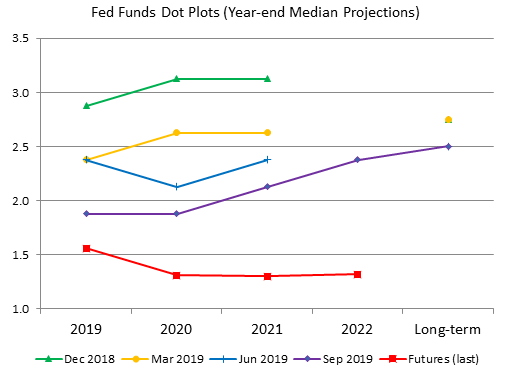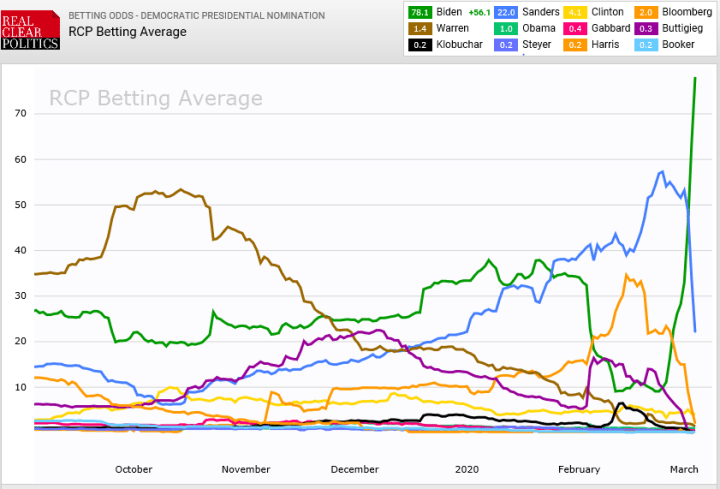Markets continue to digest the implications of the Fed’s bazooka moment last week The data highlight this week will be March jobs data Friday; key manufacturing sector data will come out earlier in the week On Friday, BOC delivered an emergency 50 bp rate cut to 0.25% and started QE Final eurozone and UK PMI readings for March will be reported; late Friday, Fitch cut UK’s rating by a notch to AA- with negative outlook Japan has a fairly busy data week; RBA minutes will be released Wednesday Markets continue to digest the implications of the Fed’s bazooka moment last week. Yet since that time, other central banks have started or widened their own QE programs, including Canada on Friday (see below). This process should continue, and supports our view that the
Topics:
Win Thin considers the following as important: 5.) Brown Brothers Harriman, 5) Global Macro, Articles, developed markets, Featured, newsletter
This could be interesting, too:
Nachrichten Ticker - www.finanzen.ch writes Die Performance der Kryptowährungen in KW 9: Das hat sich bei Bitcoin, Ether & Co. getan
Nachrichten Ticker - www.finanzen.ch writes Wer verbirgt sich hinter der Ethereum-Technologie?
Martin Hartmann writes Eine Analyse nach den Lehren von Milton Friedman
Marc Chandler writes March 2025 Monthly
- Markets continue to digest the implications of the Fed’s bazooka moment last week
- The data highlight this week will be March jobs data Friday; key manufacturing sector data will come out earlier in the week
- On Friday, BOC delivered an emergency 50 bp rate cut to 0.25% and started QE
- Final eurozone and UK PMI readings for March will be reported; late Friday, Fitch cut UK’s rating by a notch to AA- with negative outlook
- Japan has a fairly busy data week; RBA minutes will be released Wednesday
![]() Markets continue to digest the implications of the Fed’s bazooka moment last week. Yet since that time, other central banks have started or widened their own QE programs, including Canada on Friday (see below). This process should continue, and supports our view that the dollar will get more traction as the playing field is levelled more and more.
Markets continue to digest the implications of the Fed’s bazooka moment last week. Yet since that time, other central banks have started or widened their own QE programs, including Canada on Friday (see below). This process should continue, and supports our view that the dollar will get more traction as the playing field is levelled more and more.
The dollar took a hit last week as risk sentiment got a huge boost from the Fed and the passage of the US Senate-led stimulus bill. This week, improved China PMI readings for March may help the risk rally extend for a bit and therefore keep the dollar under some pressure near-term. Yet the economic toll will still be large as more and more countries go into lockdown. When the scope of the downturn becomes better known, we believe risk sentiment will worsen.
DXY has retraced over half of its March rally. Key levels to look for are the 200-day moving average near 98.0 followed by the last major retracement objective of that move near 97.837. The euro has retraced nearly two thirds of its March drop and a break above the $1.1165 area would set up a test of the March high near $1.15. Same goes for sterling, as a break above the $1.2515 area would set up a test of the March high near $1.32. USD/JPY has held on to most of its recent gains but feels heavy after breaking below the 200-day moving average Friday near 108.35.
AMERICAS
The data highlight this week will be March jobs data Friday. Consensus sees -100k vs. +273k in February. The unemployment rate is seen rising to 3.8% from 3.5%, while average hourly earnings are expected to remain steady at 3.0% y/y. Average weekly hours are expected to drop a couple ticks to 34.2. ADP jobs data will be reported Wednesday, with private sector jobs expected at -150k. It’s worth noting that initial jobless claims were 282k for the BLS survey week containing the 12th of the month, the highest since September 2017 and followed by the record high 3.283 mln reading the next week.
Important manufacturing sector data will come out earlier in the week. Dallas Fed manufacturing index will be reported Monday and is expected at -10.0 vs. +1.2 in February. March Chicago PMI will be reported Tuesday and is expected to fall to 40.0 from 49.0 in February. March ISM manufacturing PMI will be reported Wednesday and is expected to fall to 45.0 from 50.1 in February, while ISM non-manufacturing PMI will be reported Friday and is expected to fall to 44.0 from 57.3 in February.
There are a lot of minor US data out this week too. February pending home sales will be reported (-2.0% m/m expected) Monday, January S&P CoreLogic home prices and March Conference Board consumer confidence (110.0 expected) will be reported Tuesday. March auto sales (13.75 mln annualized expected) and February construction spending (0.6% m/m expected) will be reported Wednesday. Thursday brings March Challenger job cuts, February trade (-$40.0 bln expected) and factory orders (0.2% m/m expected), and weekly jobless claims (3.15 mln expected). Since the previous weekly survey was completed, more than 15 states have gone into some form of lockdown. Also, technical glitches prevented many from filing, and so we see upside risks to this week’s reading.
On Friday, Bank of Canada delivered an emergency 50 bp rate cut to 0.25% and signaled this is the lower bound. The bank also announced QE for the first time ever and will purchase a minimum of CAD5 bln per week of government bonds and short-term corporate debt. Governor Poloz implied the program is open-ended, continuing “until such time as the economic recovery is well underway. Those things can be done in very, very large amounts — literally unlimited if you like.”
Canada has a busy data week, though its jobs data will come a week after the US. January GDP will be reported Tuesday, with growth expected to remain steady at 1.9% y/y. Markit Canada manufacturing PMI will be reported Wednesday, and February trade will be reported Thursday (-CAD2.4 bln expected). USD/CAD retraced about half of the February-March rise before finding support just above the 1.39 area. Between lower oil prices and BOC QE, the Loonie will likely have trouble getting much traction this week.
EUROPE/MIDDLE EAST/AFRICA
Germany has a heavy data week. It reports March CPI Monday, with inflation expected to slow sharply to 1.3% y/y from 1.7% in February. March unemployment will be reported Tuesday. Total unemployment is expected to rise 25k and the rate is expected to rise a tick to 5.1%. February retail sales will be reported Wednesday and is expected to rise 0.1% m/m vs. a revised 1.0% (was 0.9% in January. After Germany reports CPI, eurozone March CPI will come out Tuesday and is also expected to fall sharply 0.8% y/y from 1.2% in February.
Final eurozone manufacturing PMI readings will be reported Wednesday. Headline eurozone reading is expected to fall a couple ticks to 44.6. Final services PMI readings will be reported Friday. Here too, headline eurozone reading is expected to fall a couple ticks to 28.2.6. Germany is seen worsening from the flash readings, while France is seen as largely steady. Spain and Italy readings are all expected to fall sharply from February.
Late Friday, Fitch cut UK’s rating by a notch to AA- with negative outlook. The agency cited “significant weakening” of the public finances caused by the coronavirus as the main factor behind its decision. It added that “The downgrade also reflects the deep near-term damage to the U.K. economy caused by the coronavirus outbreak and the lingering uncertainty regarding the post-Brexit U.K.-EU trade relationship.”
Final UK PMI readings come out this week. Manufacturing will be reported Wednesday, followed by services and composite Friday. All three are expected to fall about a point from the flash readings of 48.0, 35.7, and 37.1, respectively. Final Q4 GDP with breakdowns and current account data will be reported Tuesday. Sterling is likely to have trouble breaking above the $1.25 area this week.
ASIA
Japan has a fairly busy data week. February labor market data, retail sales, and IP will all be reported Tuesday. Unemployment rate is seen steady at 2.4%, retail sales are expected to fall -1.5% m/m, and IP is seen flat m/m. Q1 Tankan report will be released Wednesday. Large manufacturers index is seen at -10 vs. 0 in Q4, while small manufacturers index is seen at -20 vs. -9 in Q4. Large manufacturers outlook is seen at -15 vs. 0 in Q4, while small manufacturers outlook is seen at -25 vs. -12 in Q4. Non-manufacturing readings are also expected to worsen, while large firm’s capex is seen slowing to 2.5% from 6.8% in Q4. Make no mistake, the Japanese economy is likely to have an even worse Q1 than Q4.
Reserve Bank of Australia minutes will be released Wednesday. At that meeting, the bank cut rates 25 bp and started QE with yield curve control. February retail sales will be reported Friday, which are expected to rise 0.4% m/m vs. -0.3% in January. AUD retraced nearly two thirds of its March losses but ran out of steam near the 0.62 area. Until the global growth outlook improves, we think the Aussie will have trouble making further gains.
Tags: Articles,developed markets,Featured,newsletter






